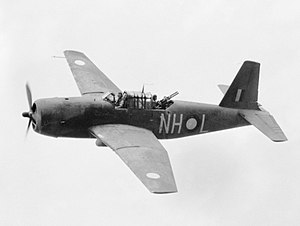| Vultee Vengeance in Australian service | |
|---|---|
 A Vultee Vengeance of No. 12 Squadron in December 1943 | |
| General information | |
| Type | Dive bomber |
| National origin | United States |
| Manufacturer | Vultee Aircraft |
| Primary users | Royal Australian Air Force |
| History | |
| In service | 1942–1946 |
The Royal Australian Air Force (RAAF) operated Vultee Vengeance dive bombers during World War II. The Australian Government ordered 297 of the type in late 1941 as part of efforts to expand the RAAF. This order was later increased to 400 aircraft. A few Vengeances arrived in Australia during 1942, and large-scale deliveries commenced in early 1943; further orders were cancelled in 1944 after 342 had been delivered.
The RAAF was slow to bring its Vengeances into service, their first combat missions being flown in June 1943. The main deployment of the type took place between mid-January and early March 1944, when squadrons operated in support of Australian and United States Army forces in New Guinea. This force was withdrawn after only six weeks as the Vengeance was considered inferior to other aircraft available to the Allied air forces. All of the RAAF's five Vengeance-equipped squadrons were re-equipped with Consolidated B-24 Liberator heavy bombers. Vengeances continued to be used in training and support roles with the RAAF until 1946, and some were transferred to the Royal Australian Navy between 1948 and 1950 for ground training.
Historians' assessments of the Vengeance's career in Australian service differ. While there is consensus that the type was obsolete, some argue that it nevertheless proved successful. Others, including the RAAF's Air Power Development Centre, have judged that the Vengeance's performance was mixed and the type was not suited to Australia's requirements.